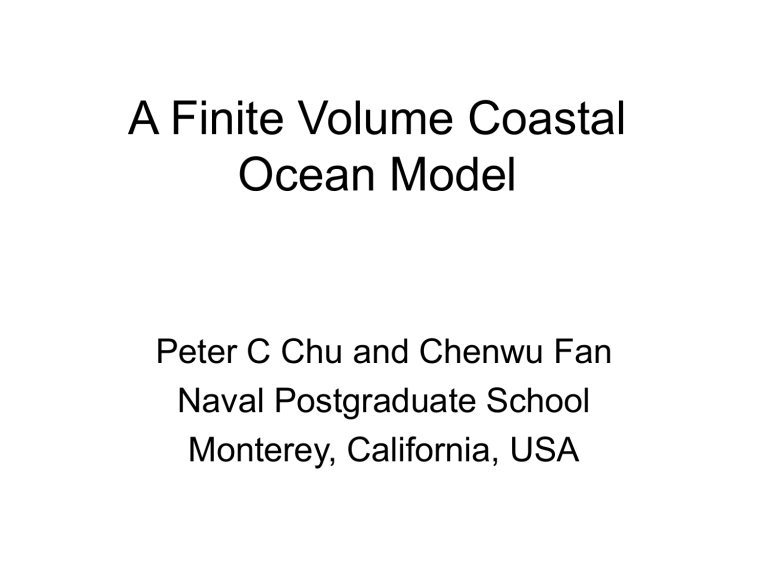A Finite Volume Coastal Ocean Model Peter C Chu and Chenwu Fan

A Finite Volume Coastal
Ocean Model
Peter C Chu and Chenwu Fan
Naval Postgraduate School
Monterey, California, USA
Four Types of Numerical Models
• Spectral Model (not suitable for oceans due to irregular lateral boundaries)
• Finite Difference (z-coordinate, sigmacoordinate, …)
• Finite Element
• Finite Volume
Finite Volume
Finite Volume Model
• Transform of PDE to Integral Equations
• Solving the Integral Equation for the Finite
Volume
• Flux Conservation
Dynamic and Thermodynamic
Equations
• Continuity
• Momentum
• Thermodynamic
Integral Equations for Finite
Volume
• Continuity
• Momentum
• Thermodynamic
Time Integration of Phi-Equation
Comparison Between Finite Difference
(z- and sigma-coordinates) and Finite
Volume Schemes
Seamount Test Case
Initial Conditions
• V = 0
• S = 35 ppt
• H
T
= 1000 m
Known Solution
• V = 0
• Horizontal Pressure Gradient = 0
Evaluation
• Princeton Ocean Model
• Seamount Test Case
• Horizontal Pressure Gradient (Finite
Difference and Finite Volume)
Numerics and Parameterization
• Barotropic Time Step: 6 s
• Baroclinic Time Step: 180 s
• Delta x = Delta y = 8 km
• Vertical Eddy Viscosity: Mellor-Yamada
Scheme
• Horizontal Diffusion: Samagrinsky Scheme with the coefficient of 0.2
Error Volume Transport
Streamfunction
Temporally Varying Horizontal
Gradient Error
• The error reduction by a factor of 14 using the finite volume scheme.
Temporally Varying Error Velocity
• The error velocity reduction by a factor of
4 using the finite volume scheme.
Conclusions
• Use of the finite volume model has the following benefit:
(1) Computation is as simple as the finite difference scheme.
(2) Conservation on any finite volume.
(3) Easy to incorporate high-order schemes
(4) Upwind scheme


